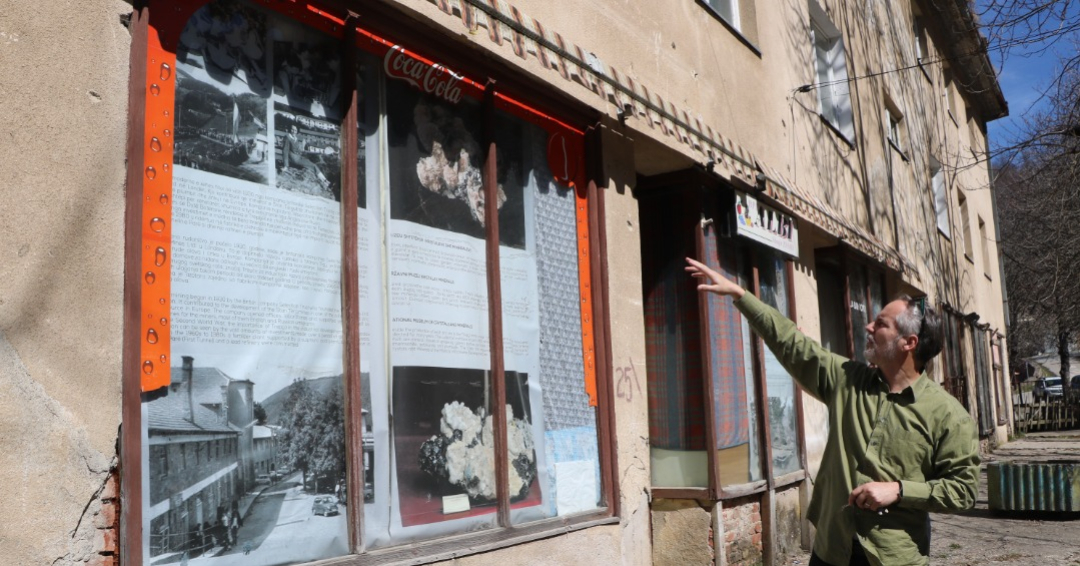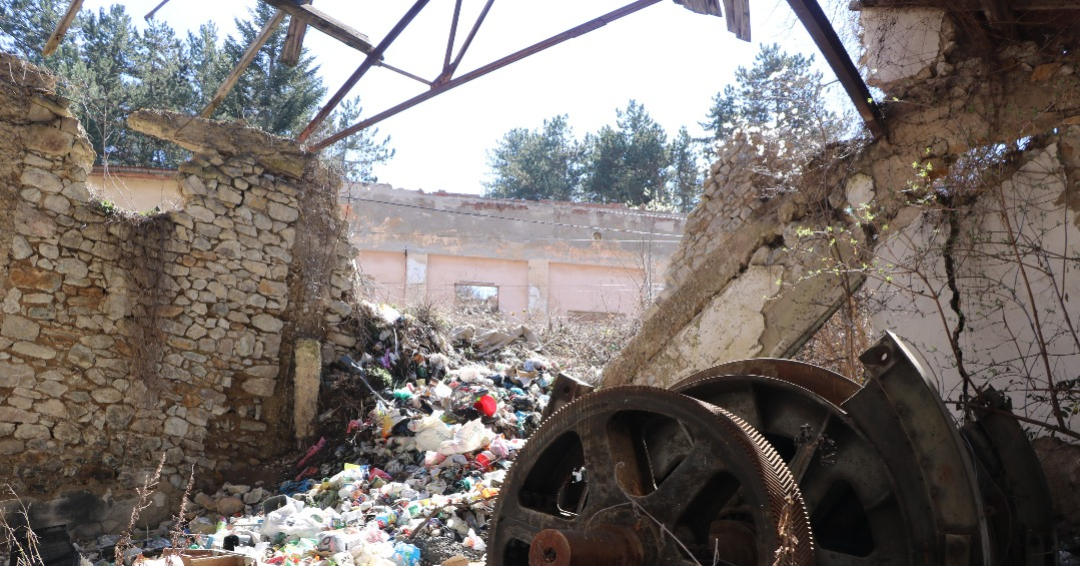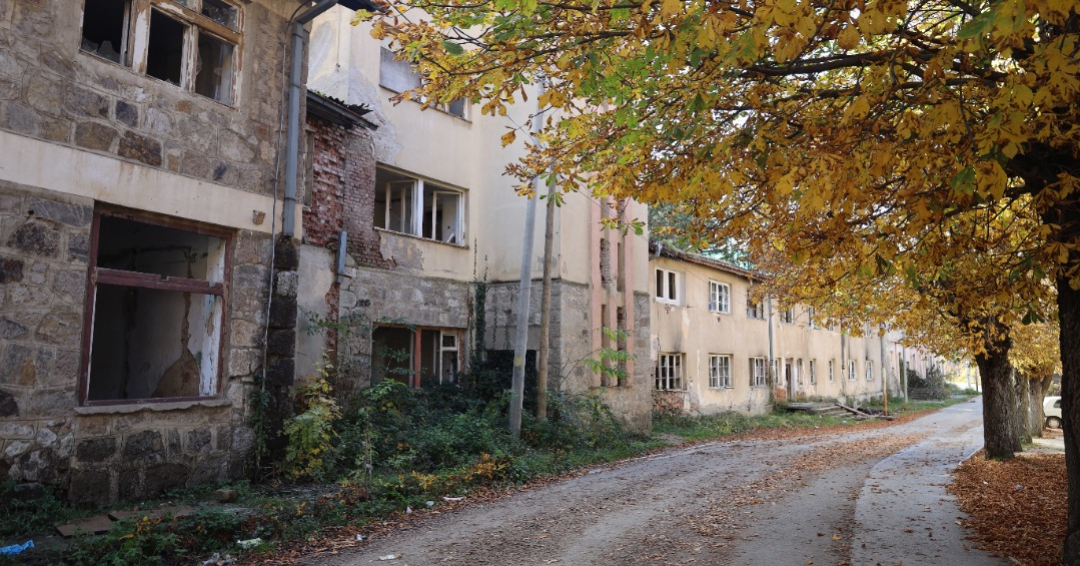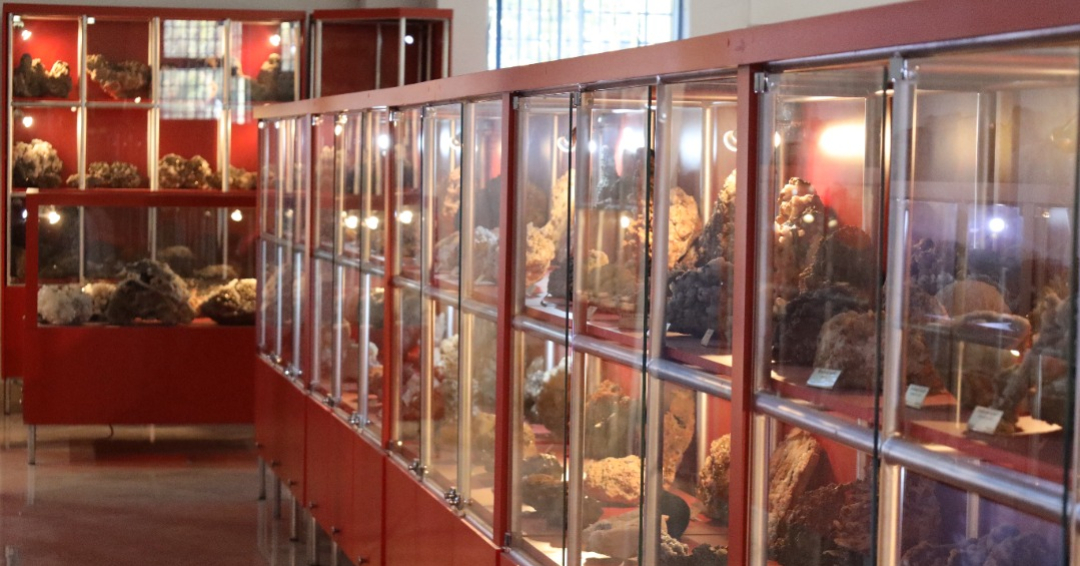While the Kosovar mining industry has been in a bad state since the war, a local association in Mitrovica believes Kosovo’s industrial heritage could be used to develop international tourism. All it needs is support and investment.
What if, one day, Kosovo’s industrial mining heritage became the country’s main tourist attraction? The idea may seem unrealistic, but that is what Lulzim Hoti, executive director of 7 Arte, a local NGO in Mitrovica, is aiming for. “Right now, I am seen as a crazy guy,” he admits. Yet this native of the divided city has worked for several years to make this project more than just a dream.
His association has focused its work on the mining sites around Mitrovica, which are currently managed by Trepça, the national public company [80 percent state-owned and 20 percent workers-owned] created in 1936, during the time of Yugoslavia. The company has now lost its former glory: from more than 20,000 at one time, the number of employees in the Mitrovica region has fallen to 1,300, spread out in the industrial park near the city center and the Stan Tërg mine, 10 km north-west.
According to Xhevdet Tahiri, one of the members of Trepça’s board of directors, the company is facing serious economic difficulties and is seeking above all to survive, because the fate of 1,300 workers’ families depends on it. Due to the lack of investment over the decades, it does not have the capacity to process its zinc and lead anymore into useful metal, and only sell the concentrate, i.e. a product with little added value.
On top of that, Trepça’s management is now divided between North and South Mitrovica, and the different facilities do not not work together anymore.

7 Arte’s would like to turn part of 100 hectares wide Trepça industrial park into a “green, social and economic area”. Photo/Kushtrim Hoti
Neglected industrial heritage
The industrial park of more than 100 hectares located south of Mitrovica has become the symbol of Trepça's difficulties. It was one of the most important industrial complexes in the Balkans, which encompassed a wide range of industrial facilities, including the first factory of batteries, private recycling businesses, ex-phosphate factories, power plants, as well as administrative and residential buildings.
Today, almost 90 per cent of the buildings on the site are abandoned: “23 years after the war, none of the factories there have managed to function and bring new jobs or economic development,” laments Lulzim.
“All these buildings have been degraded or misused. The question is whether there is a concrete plan. And if not, we propose one,” he says.
7 Arte’s vision would consist of transforming the industrial area into a “green, social and economic zone”. Luzlim managed to work with many people who are experts on this issue of how to refunctionalize, conserve, and revitalize these buildings. Last year, a study involving students from Prishtina's Faculty of Architecture was conducted in the park to analyze each building and assess the potential of the space: "In November, we organized an exhibition in Prishtina where we invited different stakeholders to see the students' vision.”
They created a map of the industrial park showing what they would like to see. Part of it could be achieved within about five years: a green area on the west side, a connection to the urban part of the city, places dedicated to cultural industry and educational programmes on new technologies [3D, programming, etc.], as well as solar panels, some businesses, a hostel and places where former miners can meet, play chests and socialize.
Ideally, the project on this site would also include a museum dedicated to the history of Trepça. But it lacks material for that, since the Trepça company had no archives or data on this subject. That is why Arte decided to do the collection itself with the help of students from the Department of Anthropology at the Faculty of Philosophy in Prishtina.
They interviewed about a hundred former miners, many of whom are in their eighties and even nineties. Their stories have been transcribed and designed for books that will soon be published. In the future, this material could be used to create a museum.

In Trepça industrial park, in South Mitrovica, most of the buildings are now abandoned. Photo/Kushtrim Hoti
‘Trepça identity is common, it is not only Albanian, or Serbian’
Working on the memory of Trepça in Mitrovica is significant in the sense that the history of the company is shared by both parts of the city. "The fact that our concept is supported by some artists from the North would be a common ground where both parts of the city would be neutral," says Lulzim. “It would be another area: not North Mitrovica, not South Mitrovica.”
Among the many positive spin-offs that would come from this, reconciliation could be one of them. “Trepça identity is common, it is not only Albanian, or Serbian. I think this common identity can bring people together,” says Valdete Idrizi, a well-known reconciliation activist in Mitrovica who is now the director of culture for the municipality and, as such, also supports 7 Arte’s initiative.
If such a place were to emerge one day in the industrial park, the idea would be to use it as a starting point for developing a tourist route, designed to attract international visitors. It would be possible to link it to Zvecan in the North, where there is a former mining facility, and to the Stan Tërg mine, still in operation, and its mineral museum.
Near the latter is also the old settlements that used to house workers from different towns in Kosovo from the 1930s until the war. At the time, it was a place full of life. “7,000 people lived here in the 1970s and 1980s," says Lulzim. There was a swimming pool, bowling, a cinema, a library and a bar with many jazz musicians.“

Lulzim Hoti, 7 Arte’s executive director, in Stan Tërg former village. Photo /Eddie Rabeyrin
In 1999, Kosovo Albanian miners were kicked out by the Serbian army, and the place became a ghost town. But the Kosovo environment ministry began restoring the area last year, starting with an old 13th-century Saxon church.
The history of mining in Kosovo began long before Yugoslavia, and there is much to be said about mining since Roman times. That is why 7 Arte thought of linking the map to other places like Ulpiana, the ancient Romanian town near silver mines [its ruins can be visited], or Artana, a town that in medieval times had mines and smelting furnaces for minerals such as iron, lead, gold and silver.

Inside one the former buildings in Stan Tërg village. Photo/Eddie Rabeyrin
Cooperation with French former mining region
The concept of a mining tourism route has proved successful in other countries. In Hauts-de-France, a region in the north of France, where the coal mining industry operated until the 1990s, the local authorities have been able to use this industrial heritage to create tourist traffic in the region, with 150,000 visitors a year spread around the main tourist attraction, the “Centre historique minier de Lewarde” [Historical Mining Centre of Lewarde] and other points of interests in the region.
7 Arte talked to the French embassy about its project, which, in turn, has made it a potential cooperation project with Kosovo. The most significant step toward this was to involve the regional tourism committee of Hauts-de-France. The latter will give the benefit of its expertise: since 2020, several French delegations came to Kosovo to assess the potential of tourism around mines. They went to Novo Bordo last year, and to Mitrovica last month. Several mayors and ministers from Kosovo were invited to visit Lewarde in June 2022.

In Stan Tërg used to live several thousand people working in the mine nearby. Photo/Kushtrim Hoti
The French teams will submit their reports to Kosovo officials by the end of the year. “These reports will present development tracks, calculated and measured over time, involving tourism spin-offs, as is now the case in Hauts-de-France,” indicates Donato Giuliani, counselor for Cooperation and cultural action at the French embassy in Kosovo.
On his side, Lulzim Hoti now has a concrete project to present. He is planning to start lobbying the Ministry of Economy, which is in charge of Trepça, and the government. “We think that, with our idea, we could employ around 1,000 people,” says Luzlim, who also maintains that it would not prevent Trepça industrial activity from continuing.
But he is aware that the main difficulty remains financial. Still, looking at how far his idea has come, he remains optimistic. “It’s a snowball falling down everytime bigger and bigger.”

The National museum of mines and minerals near Stan Tërg mine exhibits around 2000 pieces. Photo/ Eddie Rabeyrin
Eddie RABEYRIN is an intern at Prishtina Insight. After working for several years in the French local press, he resumed studies to do a Master’s degree in international relations at the University of Strasbourg, France.





